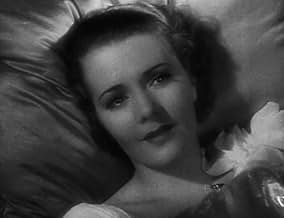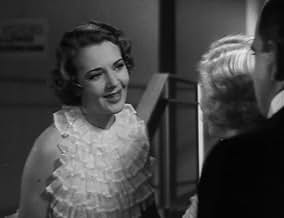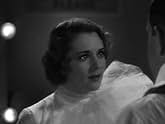Ajouter une intrigue dans votre langueAl Howard may be a star on Broadway, but he is no longer welcomed by any producer. It seems that he just trots off to Mexico any time he wants causing shows to close and producers to lose mo... Tout lireAl Howard may be a star on Broadway, but he is no longer welcomed by any producer. It seems that he just trots off to Mexico any time he wants causing shows to close and producers to lose money. When his sister Molly can no longer find Al work, she teams him up with talented Doro... Tout lireAl Howard may be a star on Broadway, but he is no longer welcomed by any producer. It seems that he just trots off to Mexico any time he wants causing shows to close and producers to lose money. When his sister Molly can no longer find Al work, she teams him up with talented Dorothy for a club date in Chicago. Flush with another success, Al wants to open his own club ... Tout lire
- Nommé pour 1 oscar
- 1 nomination au total
- Duke Hutchinson
- (as Barton Mac Lane)
- Nellie Lahey (Blonde Showgirl)
- (as Sharon Lynne)
- Tom McGee
- (as William Davidson)
- Herman Lahey
- (uncredited)
- Wardrobe Mistress
- (uncredited)
- Young Woman in Elevator
- (uncredited)
- Angry Showgirl #1
- (uncredited)
Histoire
Le saviez-vous
- AnecdotesFollowing the sensational success of Columbia's The Jolson Story (1946), Warner Bros. decided that Al Jolson's revived fame was a good reason to reissue this film. Although there were no changes or censor cuts, Warners did make up new opening credits, which added the famous later Warner "fanfare" and gave Jolson solo over-the-title billing. (Originally he and Ruby Keeler had both been given star billing. She was now listed in smaller print, with the rest of the supporting cast.) Additionally, the studio added a written prologue to make sure audiences knew that the story was set back in the long-ago and far-away time of 1935.
- Citations
Dorothy Wayne: Well, I finally met your brother.
Molly Howard, aka Lucille Thompson: Yeah, where is he?
Dorothy Wayne: Flat on his back, out cold, back of the Shim Sham.
Molly Howard, aka Lucille Thompson: What happened to him?
Dorothy Wayne: Well, man meets girl, girl meets husband, husband meets man, man meets sidewalk.
- Générique farfeluOpening card: Broadway..The street of ups and downs, where show business in 1935 was at top speed.
- ConnexionsEdited into Musical Memories (1946)
- Bandes originalesGo Into Your Dance
(1935) (uncredited)
Music by Harry Warren
Lyrics by Al Dubin
Played during the opening credits
Played during a rehearsal and sung by Al Jolson
Also performed by Al Jolson at the Casino De Paree at the end
Opening title: "BROADWAY: The street of ups and downs, where show business in 1935 was in top speed." Story: Al Howard (Al Jolson), is an irresponsible and egotistic entertainer responsible for his Broadway shows closing by not appearing. Al's sister, Molly (Glenda Farrell) comes to the Actors Equity Association with the assurance that this will be Al's last time that he will ever desert a show, but she is told by the producers that he is through on Broadway. Molly manages to get her old friend, Dorothy Wayne (Ruby Keeler), a dancer, to team up with Al in hope her partnership with him will lead up to his comeback. Dorothy agrees and she and Al become successful for the next several months appearing at Brown's St. Ledger Roof Garden. While Al treats Dorothy like a "kid," and philanders with other women, especially chorus girls, Dorothy, who resents being treated this way, unwittingly falls in love with Al and decides to leave the act. Molly, however, persuades Dorothy to remain and soon arranges to hire Duke Hutchinson (Barton MacLane), an underworld financier, to back Al's new night club engagement, The Casino De Paree, in New York. In the meantime, Al, who considers himself "God's gift to women," becomes entangled with Luana Wells (Helen Morgan), a blues singer who happens to be Duke's wife wanting to also make a comeback on Broadway by appearing at the Casino De Paree. Before opening night, Al is told by Dorothy, after receiving a phone call, that his sister Molly is in jail for murder. Al must decide whether to take the show's $30,000 to bail out Molly, or go on with the show as planned. If he abandons this show, the Duke will have his thugs awaiting for him outside.
Patsy Kelly, not mentioned in the above synopsis, provides true comedy relief in appearing in three separate scenes with Jolson actually unrelated to the plot as if she were added in at the last minute to boost up some comedy. In spite all, it helps the continuity along. Kelly is a laugh riot and not to be missed. Glenda Farrell, featured as Jolson's sister, known best for usually playing a wisecracking and fast-talking gold-digger, gets her chance on film to play a basically straight character. Farrell only has one scene that does involve comedy which takes place on a train where she encounters a British passenger (Arthur Treacher) after accidentally dipping him with ink. She even gets her chance to wear stylish wardrobes and fur coat.
Great tunes by Harry Warren and Al Dubin include: "Cielito Lindo" (written by Elpidio Ramirez and sung in Spanish by Jolson); "A Good Old-Fashioned Cocktail" (sung/danced by Ruby Keeler and chorus); "Mammy, I'll Sing About You" (Jolson); "About a Quarter to Nine," "Swanee River" (by Stephen Foster, sung briefly by Jolson in black-face); "The Little Things You Used to Do" (sung by Helen Morgan); "Casino De Paree," "She's a Latin From Manhattan," "Go Into Your Dance" and a reprise finish to "About a Quarter to Nine" (all sung by Jolson). During a night club sequence earlier in the story, there is an underscoring by a band to the tune, "'Cause My Baby Says It's So," but is never sung in the story. Possibly an intended song for this movie but scrapped before release. That song would finally be heard and fully introduced by Dick Powell in "The Singing Marine" (Warners, 1937).
Also in the cast are Akim Tamiroff, Sharon Lynn, Phil Regan and Gordon Westcott. While Benny Rubin gets screen credit, he has only a tiny bit at The Caliente. I did recognize former silent screen actress, Mary Carr, famous for sentimental mother roles in the twenties, briefly scene as a wardrobe woman.
"Go Into Your Dance," available on DVD and occasional viewing on Turner Classic Movies, is 89 minutes of solid entertainment, highly recommended as it is entertaining. And as Jolson would say whenever being truthful and sincere, "A word of a Howard." (***1/2)
- lugonian
- 20 avr. 2001
- Lien permanent
Meilleurs choix
- How long is Go Into Your Dance?Propulsé par Alexa
Détails
- Date de sortie
- Pays d’origine
- Langue
- Aussi connu sous le nom de
- Casino de Paree
- Lieux de tournage
- Union Station - 1050 Kettner Boulevard, San Diego, Californie, États-Unis(exterior establishing shot of the Santa Fe Depot)
- société de production
- Consultez plus de crédits d'entreprise sur IMDbPro
Box-office
- Budget
- 703 000 $ US (estimation)
- Durée1 heure 29 minutes
- Couleur
- Mixage
- Rapport de forme
- 1.37 : 1
Contribuer à cette page







































